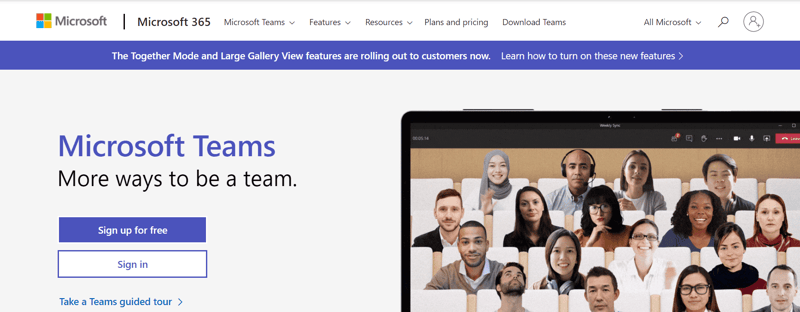Many companies were caught unprepared in the Spring of 2020 because they lacked remote communication tools within their business.
Until they were forced to work from home, remote resources and processes weren't prioritized in budgets, nor was time and resources spent on properly outfitting staff. And even if they were, many tools have a learning curve that requires a ramp-up period to solidify user adoption.
Some companies grabbed the first tools that could address their needs, but that brought a string of its own problems.
To help, we've compiled a shortlist of the tools having the most impact on remote team communications. Adopting even one could give your team the edge, ensuring everyone stays connected, no matter where "the office" is.
Keeping Your Distributed Team Connected: 6 Remote Team Communication Tools
With Software as a Service (SaaS) becoming mainstream, many great services have hit the market to help companies operate remotely. And while every company's needs are different, there are some tools that remain so flexible and beneficial that they can easily improve the efficiency and communication within an organization.
We've compiled a list of the six tools we recommend every company considers as they adopt remote methods of operations.
1. Slack

Slack is a communication channel that allows your team to communicate via instant messages. Employees can create groups and include specific members based on a project they are working on or department they belong to.
Additionally, you can create channels for your departments, or even for clients to use as guests, dramatically improving everyone's level of understanding.
Slack has been proven to be more useful than e-mail because messages are received and answered quicker. Unlike extensive e-mail threads sent to an overflowing inbox, it is far less likely a Slack message will get lost in the shuffle.
2. Microsoft Teams

Microsoft Teams is another instant communication channel, but it also serves as a file management tool and task tracker.
One of their most prominent features is the ability to video chat with other employees. During times where you cannot physically be together, conversations can be enhanced by still seeing the person you are talking to. Users often talk about how they utilize the shared workspaces and how it allows them to share documents or instant feedback.
With Microsoft Teams Calling, you can also fill the need of a cloud-based phone system, accessing voice services directly through the tool.
Contact us to learn more about how to get the most from Microsoft Teams.
3. Zoom

Many companies have used Zoom as their go-to video conferencing tool for years, but it's recently become a household name as the pandemic sent everyone home, increase the user base by over 350%.
Zoom is outstanding for video conferencing, especially when screen sharing is required. It allows you to record the meetings for future reference and provides a chat box feature to share links and notes on the fly.
Users can also make annotations on the screen with a whiteboard feature, allowing participants to collaborate in real-time.
4. Google Drive

Google Drive is the perfect tool to prevent teams from working in a silo. With customizable permissions and access, your organization can always have the documents they need to maximize productivity and innovation.
A department manager can create folders and subfolders based on projects they are working on and the various phases that project includes. Team members can save the latest versions of all documents in these folders, or work directly from a single shared document.
Instead of having to e-mail a team member for the newest version, you can go straight into Google Drive and check it out for yourself.
5. Monday.com

Monday.com is a fully functional project management tool. This web application allows you to track the progress of projects, including deadlines and deliverables. It also allows you to assign tasks to individual workers and allows them to provide status updates.
There are a lot of project management tools on the market, but Monday.com focuses on the user experience, making it a far easier to tool to adopt.
With Monday.com, a team manager could view all the deadlines coming up in a given week and then reach out individually to ensure they will be hit, providing feedback and updates within the platform. It also allows you to set up automated e-mail reminders to specific members when certain deadlines are approaching.
6. atlantech|wireless

Moving to a remote office means the loss of a desk phone. That is, unless you have the right services in place.
Atlantech provides a range of telecommunications tools and resources to keep your organization connected. One of our offerings is Business Wireless, providing a solution that allows workers to transition their personal phone into a work phone.
This is done through eSIM technology that allows you to connect into the wireless provider your company was using when you were in the office. For companies needing remote redundancies, business wireless is quickly becoming a necessity.
Finding the Right Tool for Your Business
For communication tools, there is no one size fits all. It comes down to what your team needs to succeed.
In most cases, it’s a combination of instant messaging, file sharing, and project management. Once you figure out your needs, you can invest in the programs, tools, and platforms that will help keep your team running smoothly regardless of what happens next.
Contact us today to see how we can help your team stay connected.


